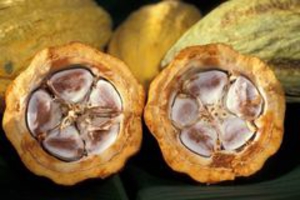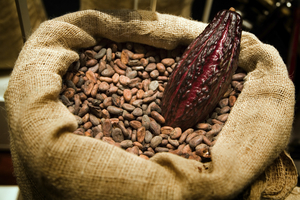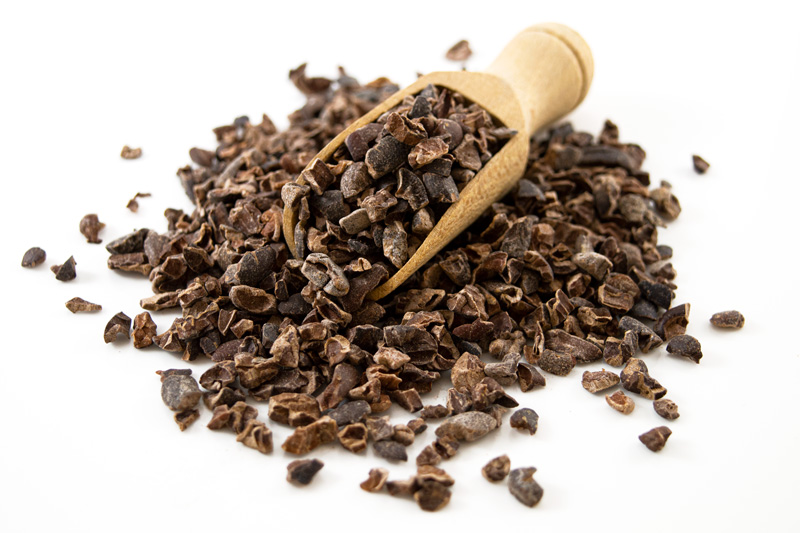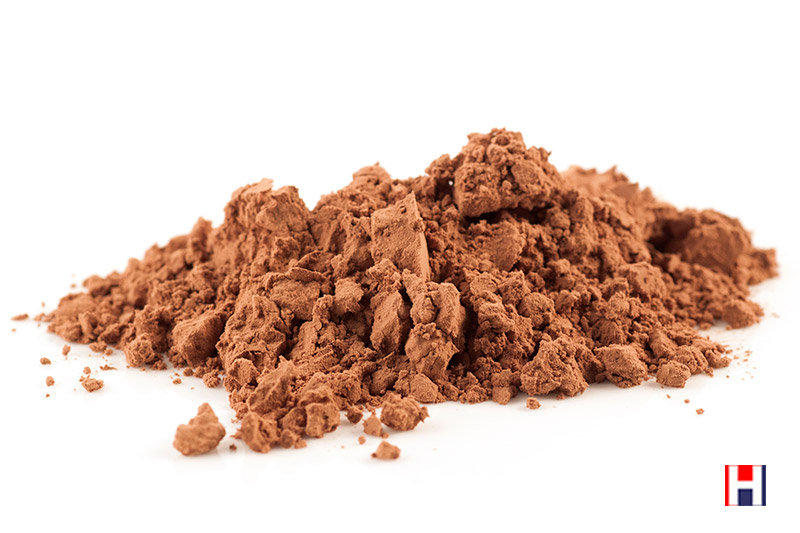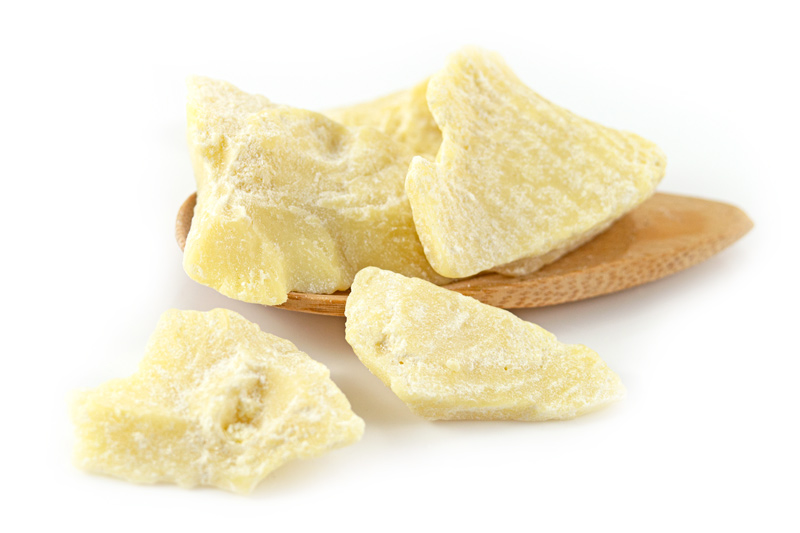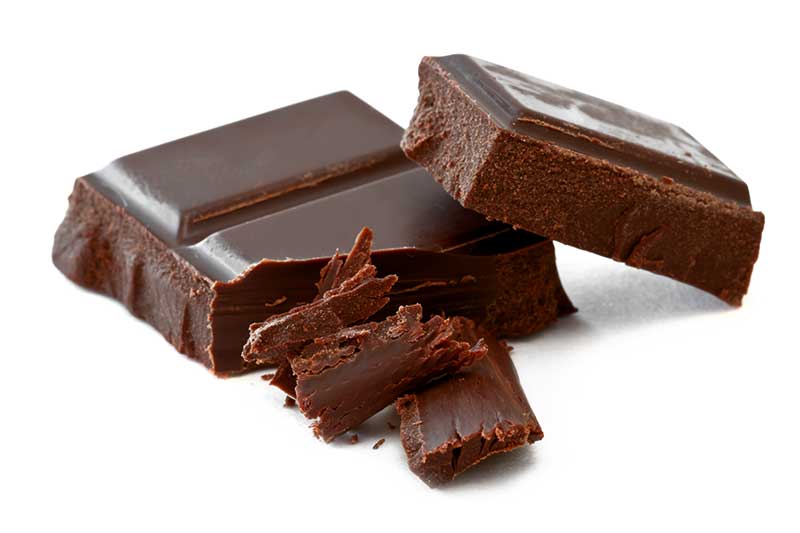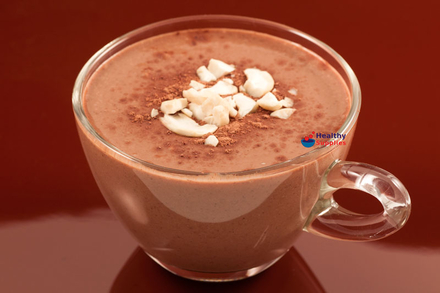Decoding Cocoa & Cacao
Cocoa and cacao are ubiquitous in any serious chef’s kitchen cupboard, and humans have been using these wonderful ingredients for many thousands of years, since the time of the Mayans and Aztecs, to make drinks, add flavour and depth to both sweet and savoury dishes, and of course as the pivotal ingredient in yummy chocolate.
Cocoa and cacao are full of flavonoids, powerful anti-inflammatory plant compounds which can protect us against chronic disease. But how are they made? Are you loco for cocoa, or do you prefer cacao, and what’s the difference, anyway? Which one is ‘raw? And what does ‘Dutch press’ mean?
Read on as we dive in and decode the data of this dreamy, delicious delight….
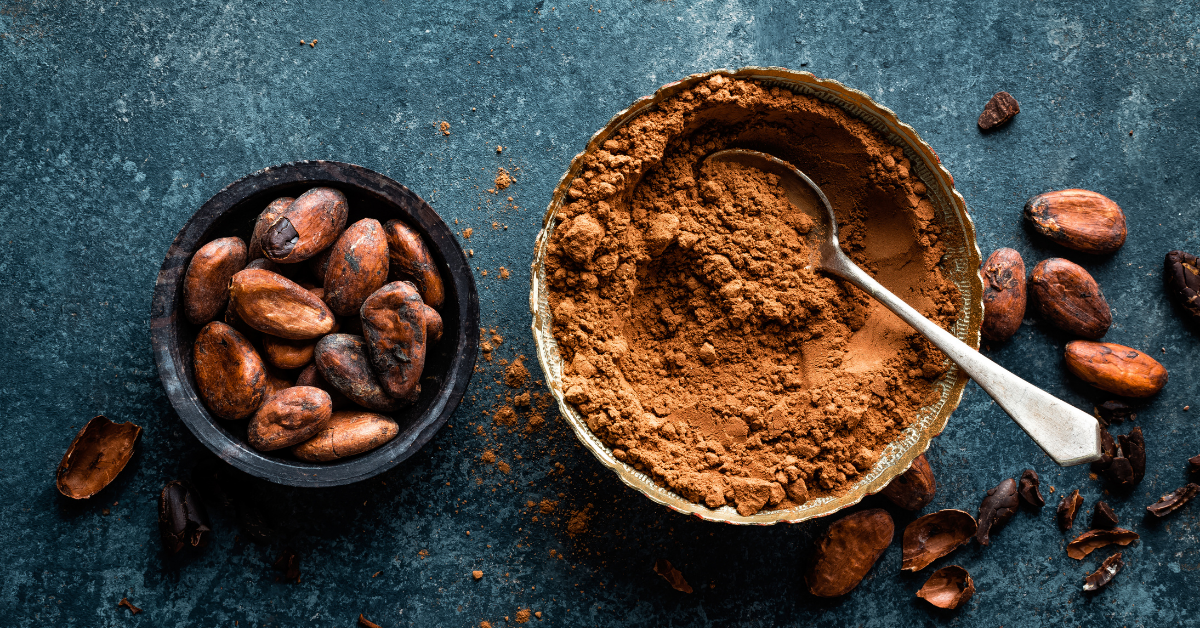
Cocoa and cacao come from the Theobroma cacao tree, which grows in tropical regions of the Americas. The tree produces a pod which can grow up to 12 inches long and contains around 40 seeds, which in their raw state are white, soft and surrounded by pulp. Their taste has been described as unexpectedly fruity, with notes of peach and melon, and not anything like chocolate.
Freshly-picked cacao beans are placed in long, shallow trays and covered, often with banana leaves, before being left to ferment naturally. They are stirred occasionally, and sometimes the trays are heated, although usually the heat from the sun is sufficient. About a week later, the beans are uncovered and spread out to dry, which takes roughly another week. When this is complete, the beans have turned to a darker brown shade and have developed a flavour profile far more recognisable from our bedtime mug of cocoa or our cheeky chunks of chocolate.
We’ve now reached the stage of the fully-fermented cacao bean, the raw base for chocolate manufacture. They are available to buy in this form and it’s great to munch on one or two if you’re a fan of the very dark, grown-up taste of bitter chocolate. When the whole beans are broken into pieces, they are sold as Cacao Nibs are are great for adding to trail mixes, smoothies and breakfast cereals.
Sometimes the fully-fermented cacao beans are ground down, and have their fats removed, resulting in Cacao Powder, but sometimes they are roasted first before the grinding and fat removal process, which produces Cocoa Powder. This means that only Cacao can accurately be labelled ‘raw’. Sometimes, an alkalising agent such as sodium carbonate is used to treat cocoa powder. This reduces its natural acidity and gives it a neutral pH, making it darker and taking away some of its bitterness. The result is known as Dutch press cocoa, and it’s generally this which is used to make the majority of commercial chocolate.
Cacao Butter is the cold-pressed version of Cocoa Butter. Its production never exceeds 46 degrees Centigrade. Both have an almost identical nutritional profile and make excellent cooking fats, especially in baking, where they will lend a subtle hint of chocolate to the finished dish. Both are also superb beauty products – they have excellent levels of fatty acids and are excellent at nourishing and hydrating skin cells, where they form a protective barrier on the surface which locks in moisture.
Finally, the part of the process we love the best! Chocolate has a bad reputation nutritionally, mainly because many brands are highly-processed and crammed with refined sugar, but chocolate contains flavanols, which can lower blood pressure, improve blood flow and protect against stroke. It’s best to choose Dark Chocolate, which generally has less sugar. There’s a huge number of choices in the world of chocolate, including raw chocolate, which has been made with unroasted cacao instead of cocoa. For a really deep choccy hit, why not try this very grown-up sugar-free bar with 100% cocoa solids?
Whether you’re constructing a gigantic multi-layer ‘event’ cake, or you simply want a tasty hot chocolate, we have everything you need from the magical Theobroma Cacao tree.
Dive in and have a browse in our huge, delicious Cocoa & Cacao section now!

